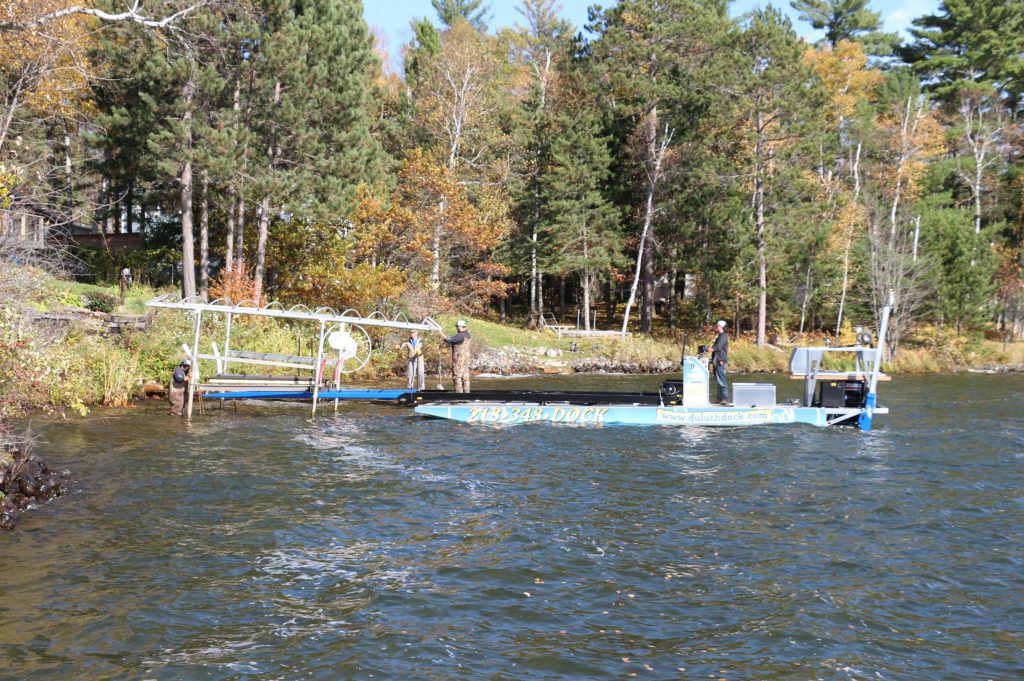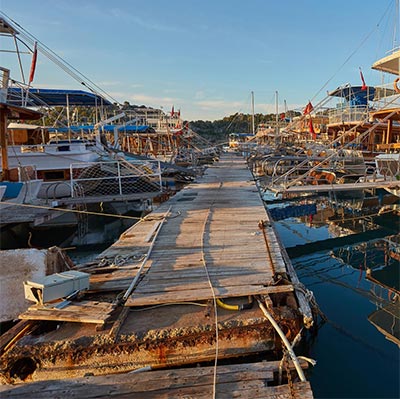Why Regular Upkeep Can Lower Future Dock Repairs
Why Regular Upkeep Can Lower Future Dock Repairs
Blog Article
Reliable Dock Fixing Techniques: Making Sure Structural Honesty
Ensuring the architectural honesty of docks with efficient repair work techniques is critical for the longevity and safety of marine centers. This entails a multi-faceted technique beginning with detailed examinations making use of innovative modern technologies like finder tools and from another location ran lorries (ROVs) to spot both visible and concealed problems. Subsequently, selecting the best fixing materials, such as composite materials and corrosion-resistant alloys, is crucial for sturdiness. Structural reinforcement methods, consisting of the execution of cross-bracing systems and load-distribution plates, play an essential duty in mitigating stress and anxiety factors. Nevertheless, the significance of these techniques comes to be noticeable when exploring innovative fixing approaches and preventative upkeep techniques.
Examining Dock Damage
Assessing dock damages is an essential initial step in making sure the structural honesty and safety of any kind of docking center. This initial evaluation includes an extensive examination to determine both visible and concealed damages. Key elements to check out include the dock's foundation, pilings, outdoor decking, and equipment. Each element must be looked at for signs of wear, rot, corrosion, or various other types of deterioration that might jeopardize the structural honesty.
Structural engineers or certified assessors normally perform these assessments using specialized tools and strategies. As an example, underwater assessments might utilize finder equipment or remotely ran cars (ROVs) to spot immersed damages. Over water, aesthetic evaluations are matched by utilizing wetness meters and other diagnostic devices to reveal underlying concerns not instantly noticeable to the nude eye.

Deciding On Repair Materials
Picking the appropriate fixing materials is a crucial action in the dock restoration procedure, one that directly affects the longevity and performance of the fixed framework. Product choice should be driven by aspects such as environmental problems, load-bearing needs, and compatibility with existing dock elements. For instance, timber is a conventional selection for anchors due to its natural strength and visual appeal. However, choosing the best sort of wood, such as pressure-treated lumber or normally rot-resistant varieties like cedar or teak wood, is vital to stand up to marine settings.
Along with timber, composite products are increasingly preferred as a result of their durability and low upkeep demands. Composites, typically made from a mix of plastic and wood fibers, offer superb resistance to rot, bugs, and UV damage. For steel docks, choosing corrosion-resistant alloys such as galvanized steel or marine-grade light weight aluminum is necessary to avoid corrosion and make sure structural honesty in saline water conditions.
Epoxy resins and marine-grade sealers are indispensable for repairing splits and securing joints, providing a water-proof barrier and enhancing the dock's total stamina. By carefully picking premium materials, dock fixings can achieve durable results, therefore safeguarding versus future degradation and making sure secure, reputable use.
Structural Support Techniques
Effective architectural support techniques are important in ensuring the stability and durability of dock fixings. This method is especially effective for docks subjected to hefty lots or rough environmental conditions.
One more necessary strategy is the application of fiber-reinforced polymers (FRP) These products offer high strength-to-weight ratios and excellent resistance to corrosion, making them optimal for strengthening concrete or wooden docks. FRP can be used in sheets or strips and bound with epoxy resins to improve structural integrity.
Bracing and securing systems additionally play a crucial duty in structural support. Cross-bracing, utilizing metal or wood beams, can neutralize lateral pressures, decreasing guiding and activity. Anchoring systems, such as helical piers or driven heaps, give a secure foundation by moving loads to much deeper, much more secure soil layers.
Last but not least, the combination of load-distribution plates can aid distribute weight extra evenly throughout the dock's surface, minimizing localized stress and anxiety points. These strategies collectively make certain that docks continue to be robust and secure, efficient in official source enduring the roughness of their functional environment.
Advanced Repair Service Methods

One more innovative technique includes undersea welding, which enables repair work to be carried out without the need to dewater the area. This technique is especially useful for addressing structural problems in immersed dock parts, ensuring very little interruption to procedures. Boosted welding strategies, coupled with robotic systems, deliver precision and reliability, thus extending the lifespan of the dock.
Additionally, cathodic security systems are carried out to stop rust in metallic dock structures. By utilizing sacrificial read this anodes or amazed present systems, these techniques efficiently mitigate the electrochemical procedures that bring about product degeneration.
Finally, advanced monitoring modern technologies, such as architectural health and wellness tracking (SHM) systems, provide real-time information on the problem of dock frameworks. These systems make it possible for aggressive upkeep and prompt interventions, ultimately making certain the long-lasting architectural stability of the dock.
Maintenance and Prevention
Maintenance and avoidance are fundamental ideas that underpin the longevity and security of dock structures. Routine inspections are extremely important, permitting very early detection of damage, potential weak points, and environmental effects. An aggressive technique, entailing routine look for corrosion, rot, and architectural shifts, alleviates costly repairs and extends the dock's operational life.
Preventative steps need to consist of applying safety coverings to steel components to secure against rust and using treated timber to withstand degeneration. Furthermore, guaranteeing proper drain and ventilation can protect against water build-up, which is an usual root cause of structural degradation. Integrating quality products and sticking to producer standards during construction and fixing stages likewise play critical functions in boosting durability.

Educating workers in dock maintenance best techniques ensures regular application of preventative actions. Leveraging technical breakthroughs, such as drones for inspections and sensing units for real-time tracking, can even more enhance upkeep initiatives. By focusing on maintenance and avoidance, dock proprietors can guarantee structural honesty, operational safety, and cost-effective monitoring over the dock's life expectancy.
Conclusion
To conclude, preserving the structural stability of marine centers requires comprehensive dock fixing methods. Comprehensive examinations utilizing innovative devices uncover both noticeable and hid damages, while the option of proper repair work products improves resilience. Implementing architectural reinforcement methods addresses stress and anxiety factors effectively. Advanced fixing methods, coupled with normal maintenance techniques, guarantee the dock remains secure and functional under diverse ecological problems. Adopting these approaches dramatically extends get more the lifespan and capability of marine framework.
Ensuring the architectural honesty of anchors via effective repair methods is vital for the durability and safety and security of marine facilities.Selecting the appropriate repair materials is a pivotal step in the dock restoration process, one that directly affects the long life and performance of the fixed framework.Reliable architectural support strategies are essential in making certain the security and long life of dock fixings. By focusing on upkeep and avoidance, dock owners can make sure architectural stability, operational safety, and affordable management over the dock's life expectancy.
In final thought, preserving the architectural stability of marine facilities requires extensive dock repair work techniques.
Report this page